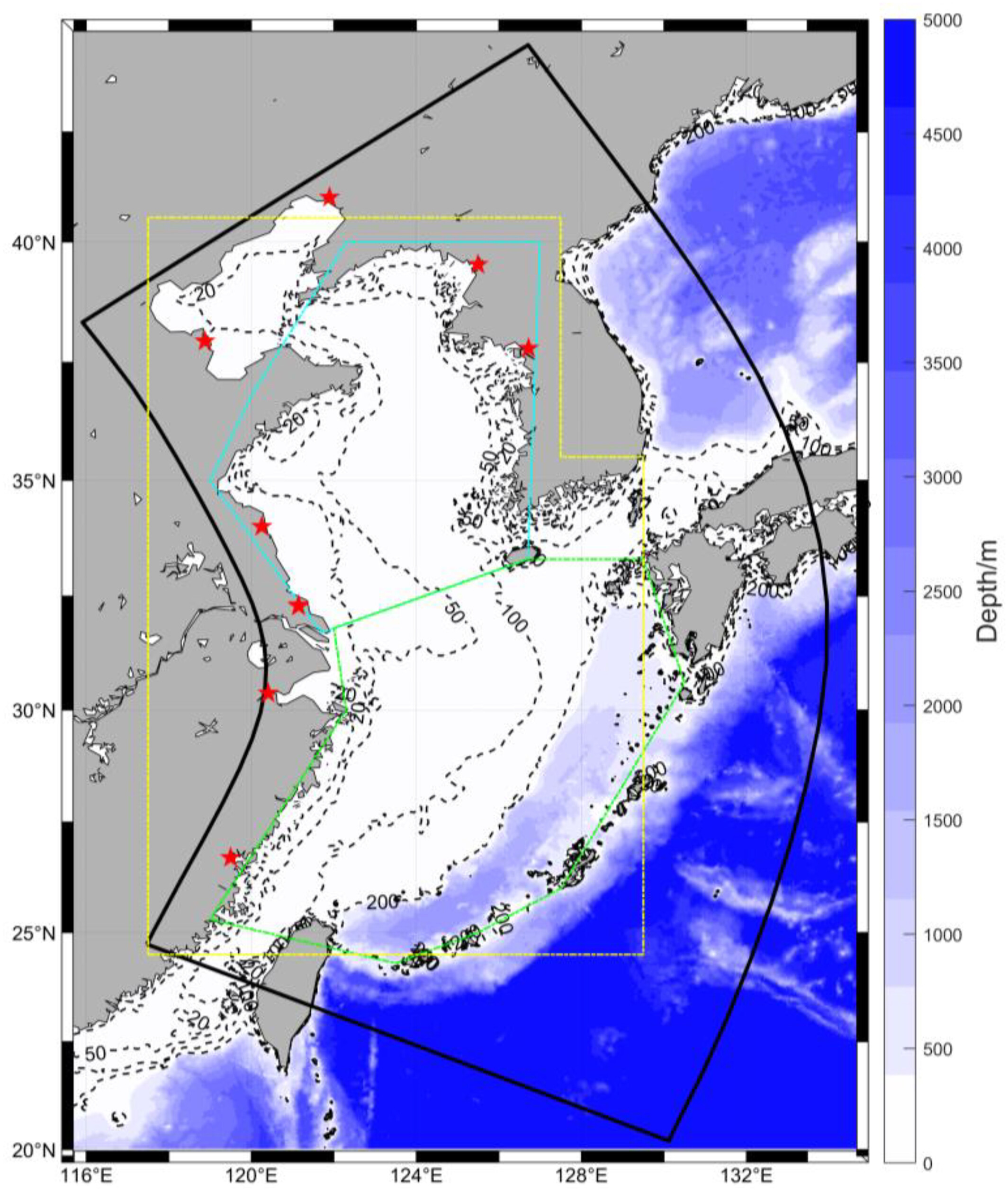Decreased Air-Sea CO2 Flux During the Persistent Marine Heatwaves in the Yellow Sea and East China Sea
Guozhi Ren, Rong Na, Shaoqing Zhang, Zengrui Rong, Wentao Ma, Fei Chai, Yongjun Tian, Yang Gao, Lv Lu
Published in Journal of Geophysical Research: Oceans, April 2025
Marine heatwaves (MHWs) exert a significant influence on marine ecosystem, especially in marginal seas where carbonate processes are intricately linked to temperature variations. However, how MHWs affect the carbonate processes in marginal seas, such as the Yellow Sea (YS) and East China Sea (ECS), remains unclear. Here, we employ a physical-biogeochemical model to simulate marine ecosystem, aiming to systematically quantify impacts of persistent MHWs (PMHWs) on air-sea CO2 flux (FCO2) anomaly in YS and ECS. Results reveal that due to reduced wind speed and elevated temperature during PMHWs, ocean CO2 reservoir experiences dramatic decrease. In summer when the ocean releases CO2 to the atmosphere, suppressed ocean CO2 outgassing induced by decreased wind speed counteracts elevated ocean CO2 outgassing resulted from high temperature. In winter, both wind speed and temperature factors suppress ocean CO2 absorption from the atmosphere to the ocean. In addition, the spatial pattern of FCO2 is dominated by partial pressure of CO2 in the surface water (pCO2). While thermal effects have a contribution of 61% and 33% in YS and ECS to positive pCO2 anomaly, non-thermal effects primarily driven by alkalinity anomaly play a more vital role in amplifying pCO2 anomaly (61% and 90% respectively). Furthermore, horizontal advection emerges as a dominant ocean process in modulating pCO2 variations in YS and ECS, with the contribution of 72 ± 17% and 75 ± 60% respectively. These findings underscore the importance of understanding the physical mechanisms behind PMHWs in analyzing its ecological impacts within coastal ocean environments.

Fig. Map of ROMS-CoSiNE model domain in Yellow Sea (YS) and East China Sea (ECS) with topography used in this study. The model domain is indicated with black line. Boxes YS and ECS are indicated with cyan and green lines, which are the domain where the PMHWs are discussed in this study. Box shown in yellow line is the domain where model validation is calculated in Supplementary Text in Supporting Information S1. The red pentagrams represent the location of rivers flowing into the model domain.
Ren, G., Na, R., Zhang, S., Rong, Z., Ma, W., Chai, F., et al. (2025). Decreased air-sea CO2 flux during the persistent marine heatwaves in the yellow sea and east China sea. Journal of Geophysical Research: Oceans, 130, e2024JC021525. https://doi.org/10.1029/2024JC021525